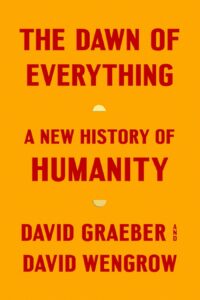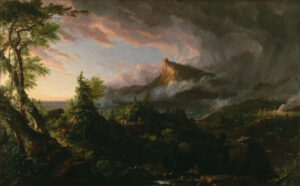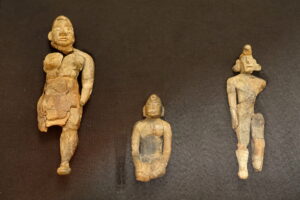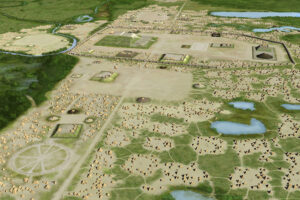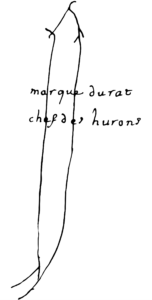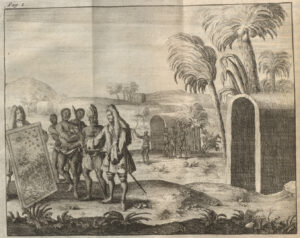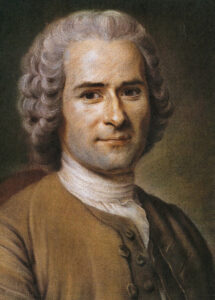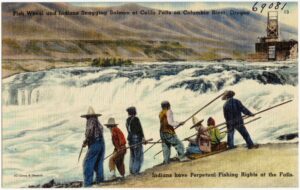Focusing on flexibility, freedom, and play, as they do, would re-orient early modern and early American environmental history (and the field of environmental history more broadly). Concepts like adaptation and resilience/vulnerability have become increasingly important in climate history to provide more nuanced explanations for the effects of climate and weather. Graeber and Wengrow push us to go further, to ask how the desire for freedom shaped engagement with the other-than-human world, to treat our subjects as creative rather than reactive. We need not always “set the dial between freedom and determinism” (206) where they do; acknowledging that it can turn that way and asking questions accordingly can transform our field.
Keith Pluymers
Further Reading
Colin G. Calloway, One Vast Winter Count: The Native American West before Lewis and Clark. Lincoln: University of Nebraska Press, 2003.
Charles R. Cobb, The Archaeology of Southeastern Native American Landscapes of the Colonial Era. Gainesville:University Press of Florida, 2019.
Christine DeLucia, “Terrapolitics in the Dawnland: Relationality, Resistance, and Indigenous Futures in the Native and Colonial Northeast,” New England Quarterly 92 (November 2019): 548–83.
Robbie Ethridge, From Chicaza to Chickasaw: The European Invasion and the Transformation of the Mississippian World, 1540-1716. Chapel Hill: University of North Carolina Press, 2010.
Mairja Gimbutas, The Goddesses and Gods of Old Europe: Myths and Cult Images, 6,500−3,500 BC, Myths and Cult Images. 1982. Reprint. Berkeley, CA: University of California Press, 2007.
David Graeber and David Wengrow, The Dawn of Everything: A New History of Humanity. New York: Farrar, Straus, and Giroux, 2021.
Gilles Havard, “Le Grand Soleil et la Mort: Anthropologie du coup natchez de 1729,” Recherches Amérindiennes au Québec 50 (no. 2, 2021): 71-91.
Vernon James Knight, Jr., Mound Excavations at Moundville: Architecture, Elites, and Social Order. Tuscaloosa: University of Alabama Press, 2010.
Louis de Lom Darce, Baron de Lahontan, Dialogues curieux entre l‘auteur et un sauvage de bons sens qui a voyagé, et Mémoires de l’Amerique septentrionale. Edited by Gilbert Chinard. Baltimore: Johns Hopkins University Press, 1931.
Barbara Alice Mann, “‘Are You Delusional?’: Kandiaronk on Christianity,” in Native American Speakers of the Eastern Woodlands: Selected Speeches and Critical Analysis. Edited by Barbara Alice Mann. Westport, CT: Greenwood Press, 2001.
Barbara Alice Mann, Spirits of Blood, Spirits of Breath: The Twinned Cosmos of Indigenous America. New York: Oxford University Press, 2016.
Ronald L. Meek, Social Science and the Ignoble Savage. Cambridge: Cambridge University Press, 1976.
Daniel K. Richter, Before the Revolution: America’s Ancient Pasts. Cambridge, MA: Harvard University Press, 2011.
Georges Sioui, For an Amerindian Autohistory: An Essay on the Foundations of a Social Ethic. Translated by Sheila Fischman. Montreal: McGill-Queen’s University Press, 1992.
Sam White, A Cold Welcome: The Little Ice Age and Europe’s Encounter with North America (Cambridge, MassachuMAsetts: Harvard University Press, 2017).
Anya Zilberstein, “Inured to Empire: Wild Rice and Climate Change,” William and Mary Quarterly 72 (no. 1, 2015): 127.
This article originally appeared in October 2022.
Robbie Ethridge is Professor Emeritus of Anthropology at the University of Mississippi. In addition to editing four anthologies, writing numerous articles and book chapters on the history and ethnography of Native peoples of the American South, she is the author of Creek Country: The Creek Indians and Their World, 1796-1816 (2003), the Mooney Award-winning book From Chicaza to Chickasaw: The European Invasion and the Transformation of the Mississippian World, 1540-1715 (2010), and co-author with Robert J. Miller of A Promise Kept: The Muscogee (Creek) Nation and the End of the Trail of Tears (forthcoming 2023). Her current research reconstructs the 700-year history of the pre-colonial Mississippian world.
Sean P. Harvey is associate professor of history at Seton Hall University and a member of the editorial board of Commonplace. His publications include Native Tongues: Colonialism and Race from Encounter to the Reservation (Harvard University Press, 2015) and articles that have appeared in Journal of the Early Republic and William and Mary Quarterly. His current research examines Albert Gallatin, colonialism, and capital in the Atlantic world from the mid-eighteenth to the mid-nineteenth century.
Barbara Alice Mann, Ph.D., is Professor in the Jesup Scott Honors College at the University of Toledo, in Toledo, Ohio, USA. She has authored, co-authored, and edited numerous books, most recently including The Woman Who Married the Bear (forthcoming from Oxford, 2022); President by Massacre (2019, ABC-CLIO), and Spirits of Blood, Spirits of Breath (Oxford, 2016).
Keith Pluymers is an Assistant Professor in the Department of History at Illinois State University, where he teaches early modern environmental history. His first book No Wood, No Kingdom: Political Ecology in the English Atlantic (University of Pennsylvania, 2021) examines how fears of wood scarcity shaped early modern English colonialism.
Daniel K. Richter is Roy F. and Jeannette P. Nichols Professor of American History at the University of Pennsylvania and the former Director of the McNeil Center for Early American Studies. He is the author of Before the Revolution: America’s Ancient Pasts (Harvard University Press, 2011).
Gordon M. Sayre is Professor of English and Folklore at the University of Oregon. In addition to his book Les Sauvages Américains (University of North Carolina Press, 1997), he is Academic advisor for the entry on Louis-Armand de Lom d’Arce, baron de Lahontan in Literature Criticism from 1400 to 1800, vol. 280.



